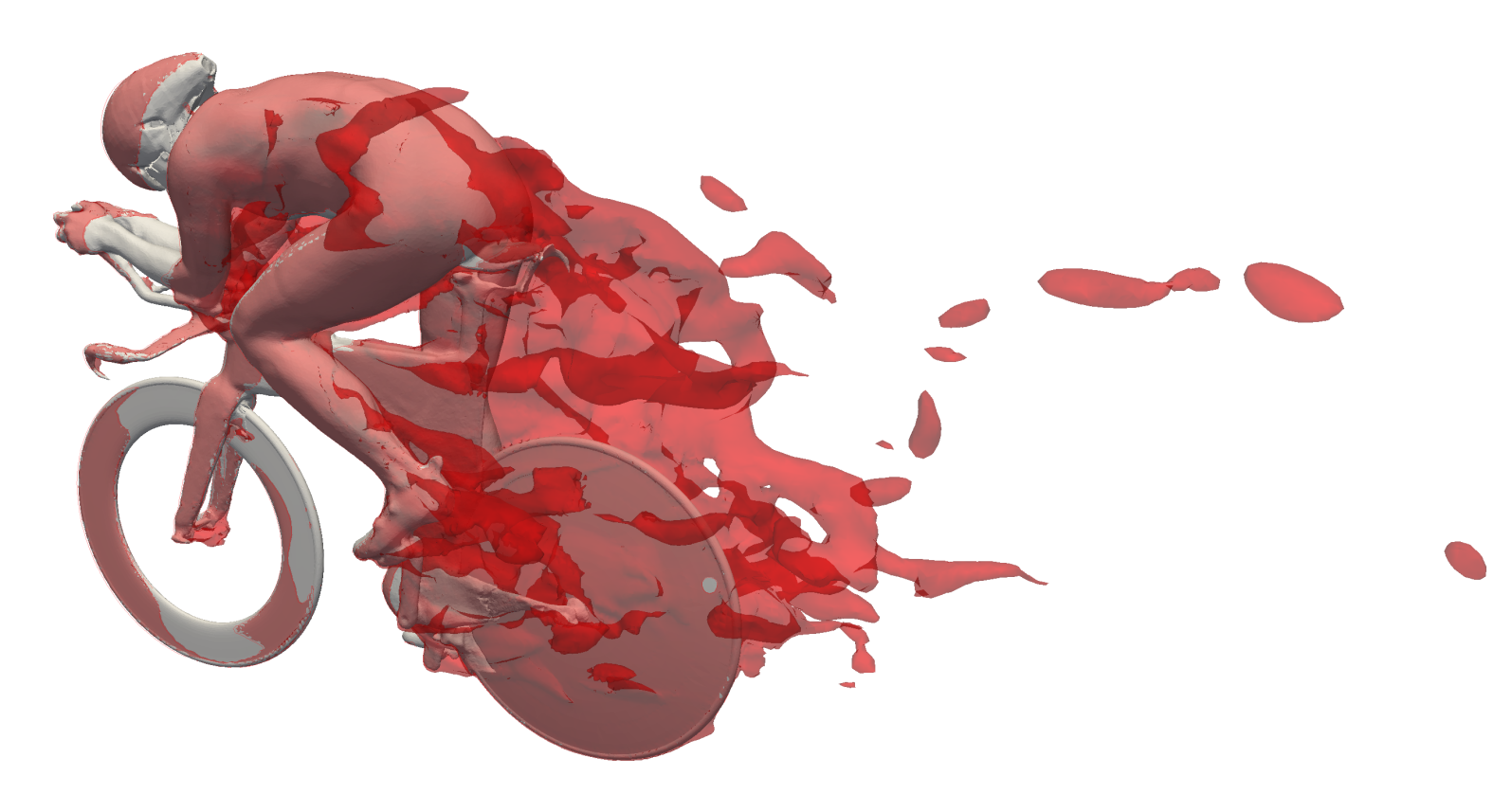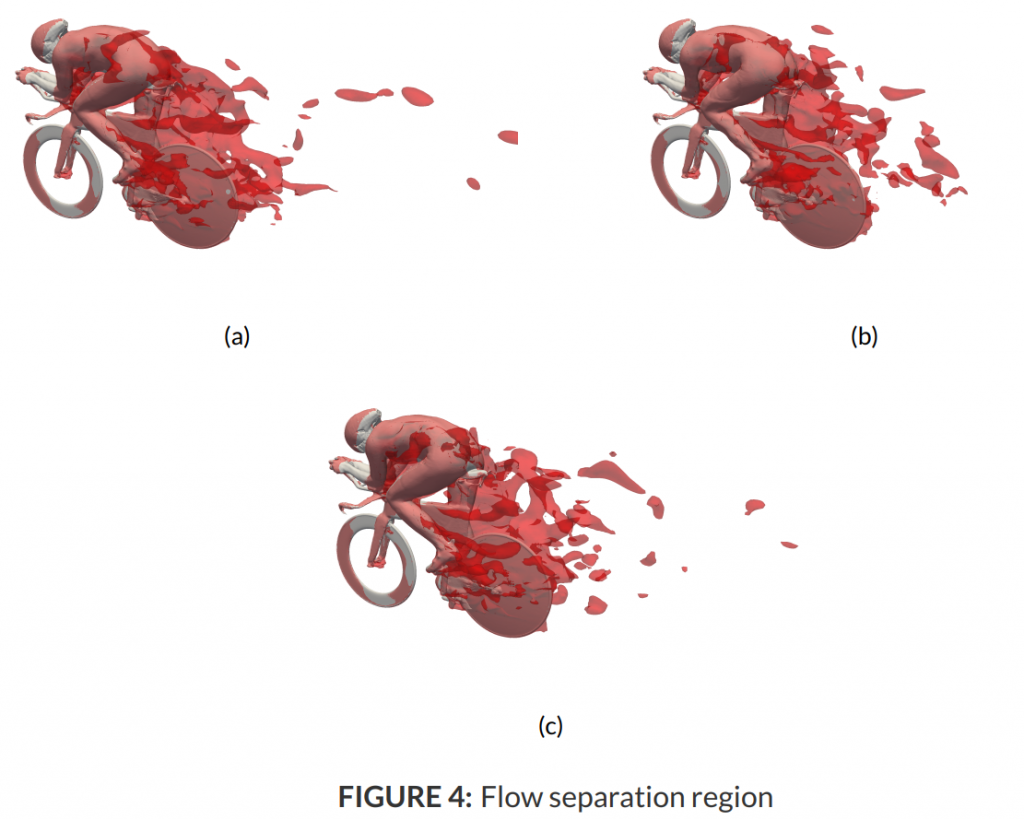
23 Jan Endurance Innovation 36 – Aerodynamic Breakdown Analysis
Andrew and Michael pour over a limb-by-limb-by-front-fork breakdown of the aerodynamics of Andrew’s bike position and discover some surprising results.
- 3:00 a primer on the Virtual Wind Tunnel
- 6:15 a dissection of Andrew (and his bike)
- BARS 4.4%
- FOREARMS 6.0%
- FORKS 3.7%
- FRAME 4.4%
- FR WHEEL 2.7%
- GEARTRAIN 7.0%
- HEAD 1.4%
- L FOOT 3.7%
- L LEG 12.9%
- R FOOT 4.8%
- R LEG 27.7%
- R WHEEL 0.5%
- TORSO 10.0%
- UPPER ARMS 10.8% (stop flexing, Andrew!)
- 10:00 Andrews VERY aerodynamic head
- 13:00 the components of drad: surface (viscous) drag and pressure drag
- 18:45 Andrews VERY un-aerodynamic legs
- 25:00 surprisingly ‘draggy’ forearms
- 26:15 and upper arms
- 28:00 drivetrain drag
- 33:00 Andrew’s overall bike vs rider drag contribution: 23% vs 77%
- 35:45 the ‘Skinny Andrew’ prototype: no measurable improvement
- 36:45 the ‘submarine gut’ advantage
- 39:30 the ‘Skinny Arms and Legs Andrew’ prototype: 2% improvement
- 41:15 aero vs instagram
- 41:45 wheels are already quite aero
- 43:45 aero optimization priorities
- Good bike fit
- Aero helmet
- Aero bars
- Front wheel
- Rear wheel
- Drivetrain
- Bike frame
- 48:30 don’t mount bottles on seat tubes!
Check out the flow separation figures for the various svelte versions of Andrew.
-
- regular Andrew
- skinny torso Andrew
- skinny arms and legs Andrew
Check out our very first episode on why humans aren’t fast. Here’s an example of how to make legs aero in this video form the world of speed skiing.
To have your very own virtual wind tunnel analysis performed, reach out to us or use this page to find a service partner near you.






No Comments